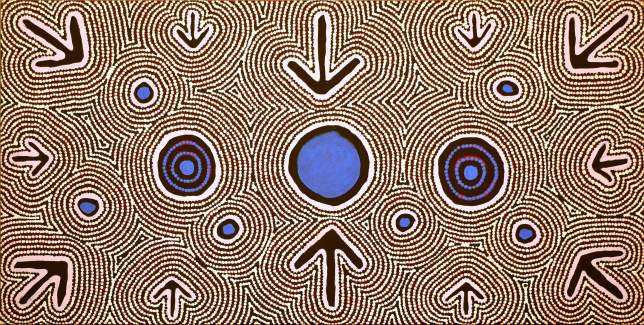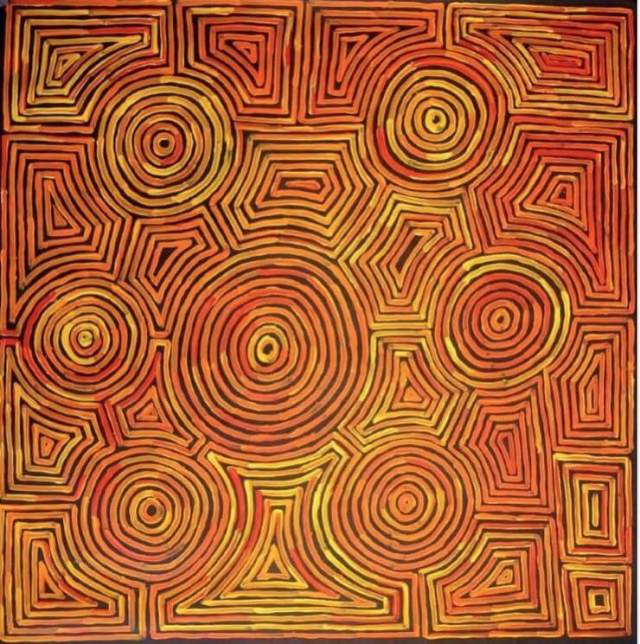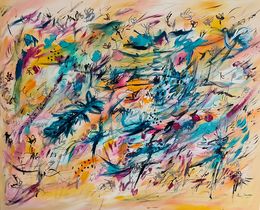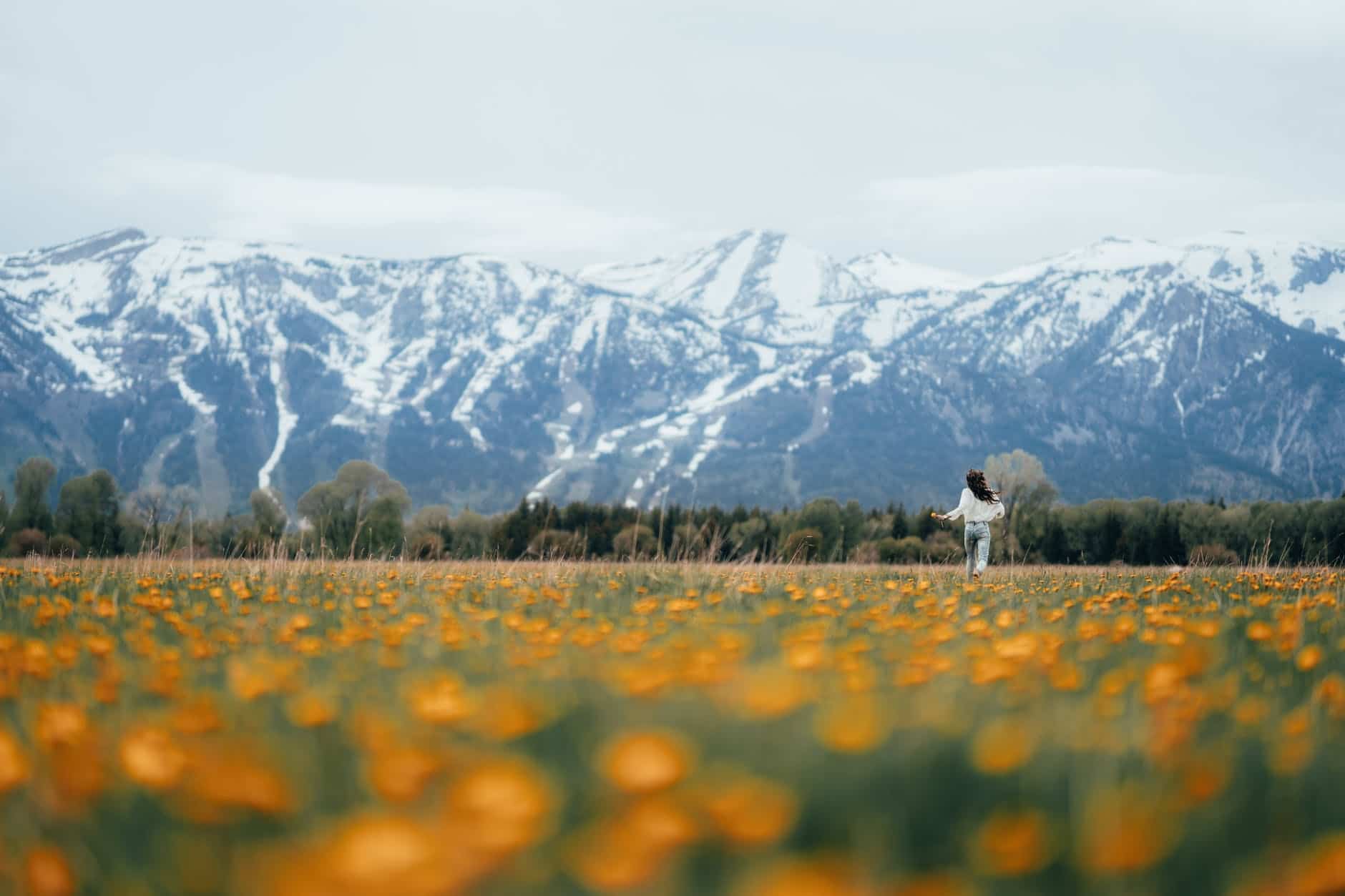
How Nature Inspires Aboriginal Art
The Aboriginal population has been living with nature for more than 50,000 years, so it is a central theme in their culture. Respect for fauna and flora is at the heart of the relationship between Aborigines and their environment. In their culture, the natural elements have a particular power which extends beyond the physical. They are essential in the ‘Dreamtime’, the term used to describe stories concerning Aboriginal spiritual beliefs and the origins of the world.

Traditionally, Aborigines are hunter-gatherers, so they have a deep understanding of different animal species, their behavior and their habitats. They use plants in the preparation of food and medicinally, depending on their properties. They trust the stars to guide them, celebrate rain in ceremonies and consider the earth to be sacred. Their connection with nature is precious and profound, so it is not surprising that it is such an important element in Aboriginal art.

This work includes many elements from nature: star, fish, ant, witchetty grub, etc.
#1 Techniques inspired by nature

Aboriginal artists have long used nature as a medium for their art. Their techniques have evolved over the last 50 years, with the adoption of painting on canvas and paper, used in particular to represent desert landscapes, and textile sculpture.

However, natural objects remain a popular medium for artists. Aboriginal rock art is one of the oldest practices in the world. Aboriginal artists use ochres to paint on rocks, on cave walls and on bark. They use many natural elements such as feathers, stones, bones, wood – just to name a few – in their art. For their ceremonies, they also paint their bodies as well as the objects used during the rites.
This is an example of a pattern painted on the bodies during the ceremonies, here painted on a canvas by the famous Aboriginal artist Minnie Pwerle.
#2 The animals in Aboriginal lands

In Aboriginal art, the animals depicted feature in the songs and stories of the “dreamtime“. They are often mentioned in the stories of initiation ceremonies, so that young Aborigines who have just become adults know where to go hunting for food.
Aborigines represent animals within art in several ways. The most common technique is to paint their tracks (in Central Australian dot art). V-shaped tracks followed by a line represent kangaroos with their tails dragging in the sand, and marks that look like a bird’s leg or an arrow are for emus. A single E is used for monitor lizards, possums or small marsupials, but 4 E’s in a row usually signifies dingoes.
Aboriginal artists also depicts animals in a way that they look like they are under X-rays (in Western Arnhem Land), or by cross-hatching (in Kunwinjku, Northern Australia).


Certains animaux représentés sont des espèces aujourd’hui disparues, ce qui est dû au fait que la culture aborigène est très ancienne. Par exemple, le tigre de Tasmanie, qui s’est éteint il y a 11 000 ans en Australie, apparaît souvent dans l’art rupestre (dans le Pilbara, au nord de l’Australie).
#3 The plants of the bush

Plants are an essential aspect of the survival of Aborigines. It is very important to share information concerning the location of vegetation to future generations, as it is used as both a source of nourishment and for medical treatment. Since plants and vegetation are so essential to their survival, they are widely prevalent in their art. Thus, there are many paintings representing medicinal plants that can be found in the Australian bush, such as Abie Loy Kemarre’s artworks.

One of the recurring plants in Aboriginal art is the yam, a plant with an extensive root system. It is one of the staples of the aboriginal diet, as both the root and leaves are edible. The ngalyipi vine, which is considered sacred, is also very important because it is used in medicinal remedies.
#4 Colors as elements of nature

The 4 sacred colors transmitted during the Dreamtime are white, black, red and yellow. White is the color of the spirits and black represents the Aboriginal people. But red and yellow are intrinsically linked to nature.
Red represents the red earth and it appears in ceremonies when Aborigines paint each other’s bodies using red ochre. This symbolises the intrinsic link between the Aborigines and the land. It is often used in artwork, along with orange and brown, to evoke the same sentiment. Yellow, the central element of the Aboriginal flag, represents the sun, which gives life to Aborigines and protects them. It is therefore also an important color for Aboriginal artists.
Thus, Aborigines draw much of their inspiration from nature, as it is a central element in the stories and songs of the Dreamtime. Their connection with nature is extremely precious: it is essential to their survival and fundamental to understanding their origins. Therefore, it is unsurpisingly very present in their art.
Discover more about Aboriginal art on Artsper!

About Artsper
Founded in 2013, Artsper is an online marketplace for contemporary art. Partnering with 1,800 professional art galleries around the world, it makes discovering and acquiring art accessible to all.
Learn more













